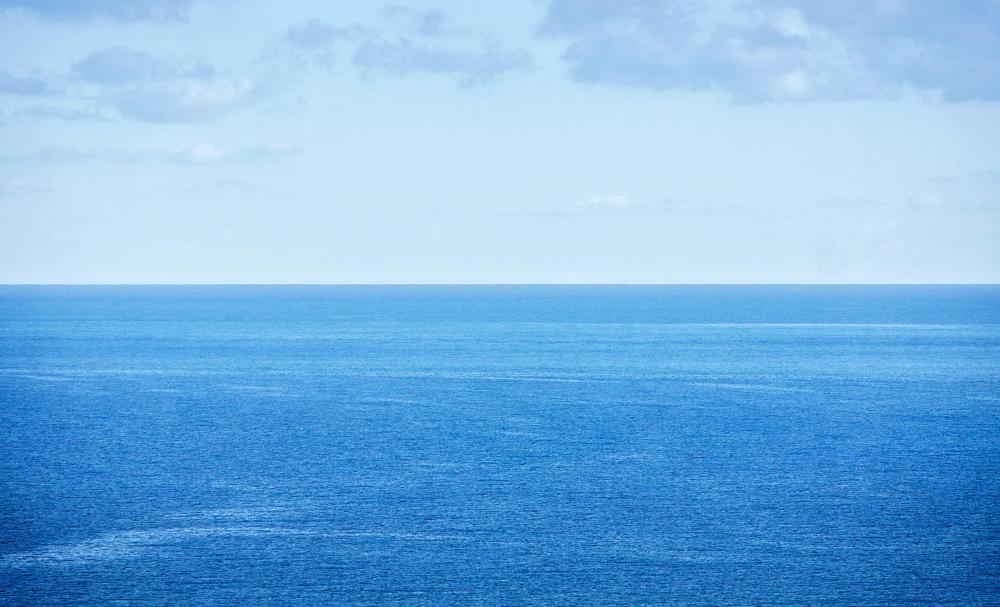At AllThingsNature, we're committed to delivering accurate, trustworthy information. Our expert-authored content is rigorously fact-checked and sourced from credible authorities. Discover how we uphold the highest standards in providing you with reliable knowledge.
What is an Undercurrent?
An undercurrent is a type of current which runs below the surface of air or water currents. The direction of an undercurrent is typically opposite that of surface currents, and the strength of the undercurrent varies, depending on the situation and the circumstances. Meteorologists often consider undercurrents when making predictions, and the study of undercurrents is an important part of the field of oceanography as well, since undercurrents play a major role in the water cycle which mixes the world's oceans.
In terms of meteorology, undercurrents can have a dramatic effect on the weather, pulling clouds and storm systems in unexpected directions. Many undercurrents are charted, so meteorologists can account for them when examining weather phenomena, while others may arise spontaneously in response to changing climatic conditions, potentially wreaking havoc. Undercurrents are part of the larger system of air circulation and patterns which creates global weather, and explains why storm systems move in the way that they do, and how the weather of various regions on Earth is created.

In bodies of water, multiple undercurrents can sometimes be found under surface currents. In the open ocean, undercurrents tend to remain very stable, making them easy to study. The largest undercurrent system is that which drives the thermohaline circulation system of the ocean, which brings upwelling lightweight, warm water from the equator to the poles, where it slowly becomes colder and more dense, sinking to the bottom and then flowing back towards the equator, where it will upwell again thousands of years later.

Surface ocean and air currents actually interact with each other; you can look at a chart of ambient air currents mapped over ambient ocean currents for an illustration. By studying the pattern of surface currents in an area, scientists can sometimes make predictions about the undercurrents, also sometimes known as sub-surface currents. These predictions are usually based on a pattern of recorded undercurrents in the region, along with a consideration of the factors that may affect these currents.

Swimmers have to be especially careful of undertows, undercurrents which run in the opposite direction of surface currents. An undertow can sometimes be much stronger than a surface current, and very unexpected. Beaches with known undertows and rip currents usually post signage to warn people to be careful in the water. Some areas have well known undertows; along the coast of North America, for example, a powerful undercurrent runs parallel to the shoreline. This undertow sometimes switches directions, making it hard to recover people and cargo lost close to the shore.
Frequently Asked Questions
What exactly is an undercurrent?
An undercurrent is a subsurface flow of water moving in a different direction from the surface current. It's often stronger and can pose a risk to swimmers and marine life. Undercurrents are driven by various factors, including wind, water density differences, and the shape of the ocean floor.
How does an undercurrent form?
Undercurrents form through the interaction of various oceanic and atmospheric conditions. Wind-driven surface currents can create friction with still water below, generating a subsurface flow. Temperature and salinity differences also contribute, as colder, saltier water is denser and tends to flow beneath warmer, less salty water, creating an undercurrent.
Can undercurrents affect weather patterns?
Yes, undercurrents can influence weather patterns. For instance, the upwelling of cold water from deep ocean currents can cool the air above, affecting local weather conditions. Large-scale undercurrents, like the Pacific Decadal Oscillation, can even impact climate patterns over decades, according to climate scientists.
What is the difference between an undercurrent and a rip current?
An undercurrent is a horizontal movement of water below the surface, while a rip current is a narrow, fast-moving channel of water that flows from the shore back to the open ocean. Rip currents are particularly dangerous for swimmers as they can quickly pull them away from the beach.
How can undercurrents impact marine ecosystems?
Undercurrents play a crucial role in nutrient distribution and water oxygenation, which are vital for marine ecosystems. They can bring nutrient-rich cold water to the surface, supporting plankton growth, which forms the base of the marine food web. This process can significantly enhance local fisheries and biodiversity.
Are undercurrents important for global ocean circulation?
Undercurrents are essential components of the global ocean conveyor belt, a large-scale circulation pattern that helps regulate Earth's climate. They contribute to the thermohaline circulation by transporting cold, salty water to different parts of the world's oceans, thus influencing global heat distribution and climate, as noted by oceanographers.
AS FEATURED ON:
AS FEATURED ON:













Discussion Comments
@shell4life – The thought of being pulled out to sea by an undercurrent terrifies me! I have always loved swimming in the ocean, but there is a certain amount of fear that goes along with it.
I always respect the signs put out by beach personnel. When the sea is choppy and the winds are high because storms are approaching, they usually put out yellow flags. You can still go in the water when yellow flags are up, but they signify a moderate risk of rip tide, and I don't want to take the chance, so I stay out.
Some days have been so rough that there are two red flags placed on the beach. This means that no one is allowed in the water, because even the best of swimmers is likely to get tugged away by the undertow.
I define undercurrent as an unspoken feeling of anger. I never knew that it was actually related to weather and water, because I had only heard it used when referring to the mentality of a group of people.
I had a terrible boss years ago, and everyone despised him. The undercurrent at the restaurant where we worked was one of resentment, and we all had a feeling that one day, there would be a revolution.
He finally did something to upset us so much that we all quit on the spot. He had a restaurant full of impatient customers and no one to serve them. Our hostile undercurrent had been transferred to them, and the boss actually ran away from his own business!
I've always heard that when cold air and warm air collide, you get severe thunderstorms. I guess that the undercurrents are what pull those air masses together.
I live in tornado alley, so I am always weather alert. I have a storm shelter out front, and my local TV stations all jump on the case when severe weather approaches.
I always watch the weather forecast, and when I see two air masses of drastically different temperatures coming together, I know we will be in for a rough time. The meteorologist can tell by the undercurrent what will likely happen, but I usually pray he is wrong.
My great-grandfather was killed by an undercurrent in 1946. He had been swimming off of a peninsula in Florida, and the water was rough that day.
The two men who had been with him had also gotten caught in the undercurrent. They knew to swim parallel to shore until they broke free, but my great-grandfather panicked and tried to swim to shore. He got swept further out, and his body washed up days later a few miles down the beach.
I know that the two men felt horrible about being unable to save him, but they knew that if they attempted to swim out, they would likely die, too. It was a terrible situation for everyone involved.
Post your comments